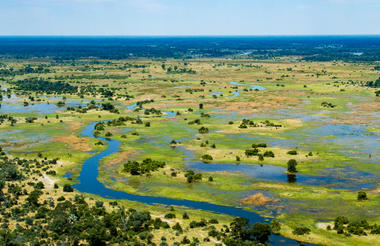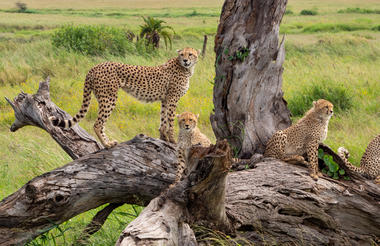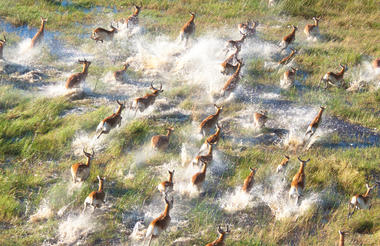Resting on the southern banks of the Zambezi River at the western end of the eponymous falls, this popular tourist town is compact enough to walk around and makes an ideal base for travellers exploring the seventh wonder of the world, the unfathomably vast Victoria Falls. About two thirds of the falls can be viewed from the Zimbabwean side and, while the falls are undoubtedly the star attraction, the area provides both adventure seekers and sightseers with plenty of opportunities to warrant a longer stay. Popular activities include scenic flights over the falls in helicopters or micro lights, bungee jumping off the Victoria Falls Bridge, white-water rafting (seasonal), and day trips to Chobe National Park. The town itself offers some excellent accommodation and restaurant options as well as an eclectic variety of African curios and authentic art sold by friendly Zimbabwean locals who are wonderfully welcoming and eager to help you enjoy your stay.
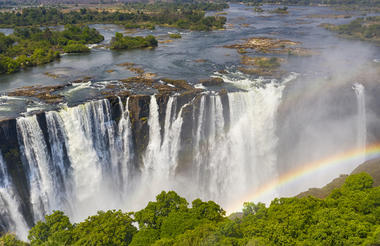
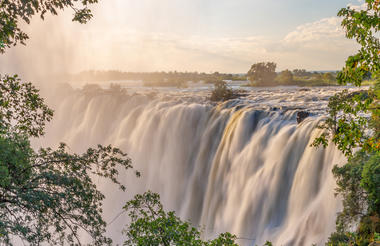
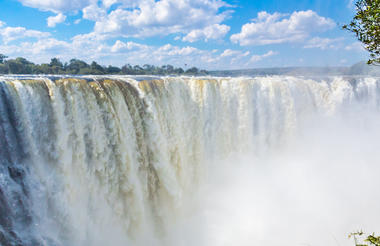
The Chobe River forms the northern boundary of the Chobe National Park, renowned for its reliable and diverse game viewing. Safaris are conducted both by boat and on land. This section of the park is best known for its elephant and hippo populations but the waters attract all manner of game including large herds of buffalo and the lions that prey on them.
It is surrounded by areas that serve as some sort of protection for the Okavango Delta ecosystem, there are no fenced boundaries between the different concessions and the reserve and this let the game roaming in complete feeedom around the woodlands and the riverbanks, depending on the season. The original inhabitants ( bushmen) of the area were moved to the peripheral parts of the reserve, where they gave life to the Khwai village, near the northern entrance of the park. The Khwai area is managed by the community through the Khwai Development Trust. This area offers the same game watching opportunities as the reserve, but on the top of that here you can also go for guided walks, during day and nightime. Vegetation is varied, with dried areas and permanen or seasonal swamps that create many different habitats for mammals and birds. Animals mainly gather around the permanent waterholes during the dry season ( april / october), considering that the weather will get hotter and hotter as the season progresses. The rainy season (november/ april) reivigorates the land and offers a lush scenic landscape with endless blooming wild flowers, dramatic thunderstorm, breathtaking sunsets. It is also the reproduction season therefore interaction between preys and predators is guaranteed.



The Okavango Delta is the biggest interior delta in the world and it lies inside an uninterrupted sandy stretch, known as the Kalahari pan. This oasis in the middle of a desert has a very fragile ecosystem that however hosts a lot of wildlife. Here animals have adpted to the hostile living conditions of the desert that gets transformed as soon as the floods from Angola arrive.
The Okavango floods reach the Moremi Game Reserve and the surrounding regions, divided into areas known as private concessions. These concessions are carefully administrated and managed in order to keep a balance between the community and the animal conservation. The local communities receive all the profit gained through this eco-friendly and sustainable type of tourism. Mostly, the exclusive lodges in Botswana are to be found inside these concessions that are able to offer an unparalled exclusive experience, far from the mass tourism tracks. The level of the floods varies dramatically throughout the year, with its highest levels being in the dry winter season and its lowest during the last months of summer, unlike what happens with the seasonal rains. The landscape, the activities and the game watching varies a lot according to the area, the season and the level of the flood. Some areas have some portions which are always dry and here the main activities are game drives in 4x4. The lodges on the islets inside the Delta offer more water activities, like mokoro excursions, walks, boat cruises, fishing and bird watching. The lodges in the outer stretches of the Delta are to be considered as seasonal and they all offer different types of experiences according to the time of the year, mainly water activities during th floods and mainly on land when the floods withdraw. Animals gather around the permanent waters during the dry season (april/october) due tot the fact that weather gets much warmer as the season progresses. In general, bird watching is excellent in the summer months. The rainy season(november/april) reinvigorates the soil and offers lush views teeming with endless wildflowers, dramatic thunderstorms and wonderful sunsets. Furthermore, being the reproduction season on, it offers much more interaction between preys and predators.
